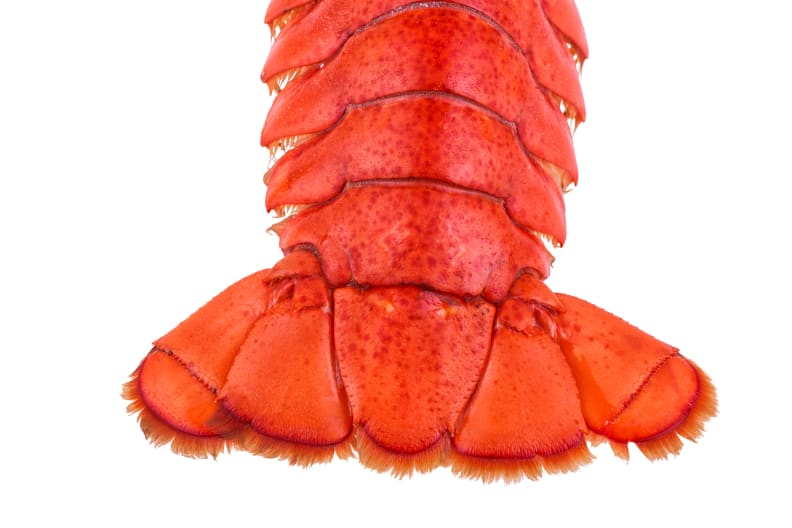Recommendations are independently chosen by Reviewed's editors. Purchases made through the links below may earn us and our publishing partners a commission.
I was born and raised in a small Maine town just north of Portland, so I’ve been crackin’ lobstahs since before I could talk. Is this cliché? Yes. Is it true? Mostly yes.
For those who haven’t grown up in the lobster capital of the world, I understand that disassembling these aquatic creatures can be intimidating, whether you're at home or in a restaurant. How can you make sure you’re getting all of the meat, and eating only what you’re supposed to?
As Reviewed’s token Mainer, I’m here to show you how we do things in my neck of the woods.
{{ amazon name="Lobster crackin' set", asin="B01GPMJV7E", align="right" }}
You’ll need:
- 1 large plate to hold your lobster meat
- 1 big bowl, for discarded lobster shells and stuff
- 1 small bowl to melt salted butter in
- A lobster cracker for tough-to-crack shells
- A seafood fork/pick to get tiny pieces of meat from tight spots
- A bib to protect your clothes (yes, really)
Prep your area—and yourself
Proper planning will set you up for success. Lobster cracking is really, really messy. I only do it at home, and weather-permitting, outside. Never in a restaurant—it’s expensive, a lot of work, and, like ribs, you’re going to want to wash up after.
At a table, set a plate with a boiled lobster, a cracker, and a pick. No fork, no knife. In one small bowl, melt a couple of tablespoons of salted butter. Fill the other small bowl with water. Set the large bowl in the center of the table: This is where your discarded shells will go.

Also, tie on a bib, because at some point you will get doused in lobster juice and you will be upset about it if you’re not properly protected.
Get cracking: Remove the claws
Now it’s time to dig into the lobster. Note: Always crack your lobster over the garbage bowl, because the lobster will spill a lot of water each time you break into it.
First, remove the claws and the arms at once by holding the lobster head-up over the garbage bowl. Grab the top of the claw and move the arm down until it separates from the body.

Pull the “thumb” part of the claw away like a lever to release more liquid from the claw (it’s OK if that little part breaks off, just make sure to retrieve the meat from it with your pick before you throw it out). Then, separate the claw from the knuckles with your hands or the cracker. This part is debatably the most difficult.

Take your cracker and break into the bulk of the claw and either carefully use your fingers or a pick to retrieve the meat. There will be fatty residue on the claw: Use the water bowl to rinse it off before eating. Repeat this process down the knuckles of the claw.
Crack into the tail end of things
To remove the tail, grab the lobster with one hand on the body and the other on the tail (again, over the bowl). Crack the tail upwards and then downwards, making a V and then an A with the body, and the tail should dislodge fully. The meat will most likely have a mushy green substance at the top. That’s liver, or “tomalley.” You don’t have to eat it, but die-hard Mainers like my mother love it.

Break the fins off of the bottom of the tail and check for meat before you discard. Then, squeeze the edges of the tail (hot dog way, not hamburger) to vertically crack the shell. You can use the cracker, if necessary. Then, stick your finger or your pick in the opening where the bottom fins once were to push the meat out of the top. It should slide out in one piece.

Crack these bottom fins out and push the tail meat out from the opening.
This next part is important. There is a thin layer of meat running along on the top of the tail. Carefully peel it back and remove it to reveal the digestive vein. Yes, this is what you think it is. Remove it and toss it and don’t think about it too much. Rinse both pieces of the tail—the top layer and the giant chunk. Both are suitable (and delicious) for consumption.

Really get into it
If you’re like me, you’re going to maximize this lobster. Any lobster over 1 pound will have a lot of meat hiding between the feathery filaments in the body. These pieces are the most difficult to retrieve, but often the sweetest meat on the lobster. Your hands are your best tools, here: Crack the body open and feel around for meat that feels edible and not tough.
If the legs on the lobster are big enough, break them off and chew lightly on the shell from the bottom up (as my dad says, disconcertingly, “like pixie sticks”) to coax out the meat.

Lastly, if you’re real thrifty, like my great-grandfather was, hang onto the garbage bowl and toss the bodies and discarded shells into boiling water for a lobster stock. You may as well get the most out of this luxurious crustacean.
Related Video
{{ brightcove '5466245859001' }}

